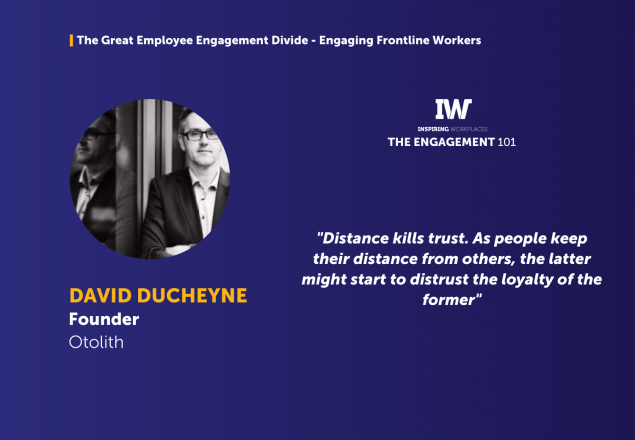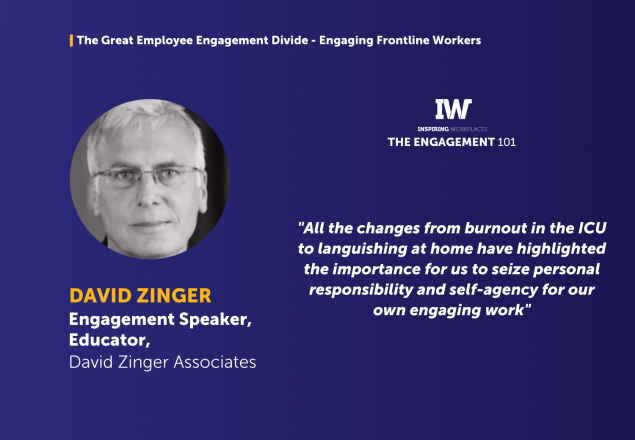
26th March 2025
8 Practical Strategies to Build a Thriving and Meaningful Work Culture

Jennifer Moss’s “8 Proven Strategies to Create a Meaningful Work Culture” outlines practical approaches to transforming workplaces into environments where employees thrive. Through hope, purpose, community, compassion, freedom, openness, belonging, and recognition, leaders can cultivate a culture that boosts productivity, engagement, and retention while promoting well-being and inclusivity.
This article was written by Jennifer Moss and published in The Next Big Idea.
Leaders don’t need to take a ton of time overhauling company culture to create workplaces where employees want to spend their time. Simple shifts and incremental changes can foster community, fuel purpose, boost productivity, and deliver meaning to every team member. Jobs that employees actually like are the ultimate capitalist business strategy.
Below, Jennifer shares eight key insights from her new book, Why Are We Here?: Creating a Work Culture Everyone Wants.
1. Hope.
We can’t blame growing detachment from work on one thing. A behavioral mindset shift has happened in response to polycrisis, meaning multiple crises that collided to make each individual crisis worse. The pandemic, climate disasters, accelerated AI adoption, political and economic instability, and war have changed our collective psychology and priorities.
The American Psychological Association reports that roughly seven out of ten people feel overwhelmed by the number of crises in the world, with climate anxiety topping the list. This is why we are asking ourselves big existential questions: Why am I here? What is the point? Is this worth my time?
Research finds that when facing the finitude of life, you start mentally reorganizing your priorities. If work feels like a grind, our subconscious brain sees it as a threat. We will have less patience for what we see as wasting precious time.
If we want a thriving work culture, leaders need to burn past playbooks. The strategies we used to rely on for motivation, engagement, productivity, and retention are no longer effective. People don’t just want better jobs—they want better lives.
“The strategies we used to rely on for motivation, engagement, productivity, and retention are no longer effective.”
We are in the middle of a global hope crisis. The 4th Annual Mental State of the World Report reveals that global mental well-being has remained at a post-pandemic low, with 41 percent of adults experiencing significant worry, and one in three attributing declining mental health to work. Yale researchers have found that feelings of powerlessness against complex environmental issues contribute to despair and anxiety in workers. Without hope, organizations stagnate and people lose the ability to imagine their role in a better future.
Some say hope isn’t a strategy, but I interviewed military leaders who told me that hope is the only strategy in their world. They shared that hope develops resilience. It gives people the courage to be steadfast in their goals despite extreme adversity, helps them thrive in uncertain environments, and strengthens team cohesion.
Hope activates the brain’s problem-solving regions, making employees more effective under pressure. Leaders can build an evidenced-based hope strategy that increases optimism and moderates uncertainty.
2. Purpose.
The workforce is rejecting meaningless work. 63 percent of employees say they don’t feel their jobs contribute to something meaningful, and over 40 percent are considering switching jobs—or even careers—to find more purpose in their work. Meanwhile, employees who feel their work aligns with their values are three times more likely to stay, even in high-pressure environments. Purpose is the ultimate retention tool.
I spoke with Adam Grant, world-renowned psychologist and bestselling author, who has a deep understanding of the importance of purpose-driven work. He advised that we stop worrying so much about getting people aligned with the company’s mission statement. Instead, we should attach individuals’ values and goals to their job’s daily tasks to help them see how their effort counts for the bigger picture. With interviews and insights from companies doing it right, the examples in my book demonstrate novel ways to connect meaning and purpose to work.
3. Community.
Work feels like going to school without art, gym, or recess. We are not having fun. We have stopped focusing on building friendships because we are so time-starved. But loneliness is a real threat to mental health, and it negatively impacts business outcomes like productivity and retention. Leaders need to rebuild relational and social energy at work. We need friendships to make the workday feel energizing and joyful. Employees with strong social connections at work are 50 percent more productive and three times more likely to stay with their company.
It’s easy to blame remote and hybrid work as the culprit for lack of cohesion, but that is a myth. Community comes from re-establishing rituals and making them fit new work modes. Just putting people in a physical space together is not the answer. I suggest rethinking building community not as a question of where, but more so as a matter of when, how, and with whom.
4. Compassion.
Empathy in leadership requires active listening. Compassion is actioning what was heard. In the age of rapid technology adoption, fear of obsolescence is at an all-time high. 78 percent of workers are anxious about losing their jobs to automation. Leaders must lead with compassion to address these fears.
“78 percent of workers are anxious about losing their jobs to automation.”
Compassionate leadership is kind and strategic. It builds psychological safety, allowing employees to adapt to change and embrace innovation. Compassion is the skill that leaders require if they want to calm anxiety and create teams that trust the future. In the book and my recent LinkedIn course—“From AI Anxiety to Action: A Leader’s Guide to AI Readiness”—I offer tips for leaders to meet fear and uncertainty with open conversations about AI, validating fear of the unknown, sharing the vision, and showing employees how AI will support their roles.
5. Freedom.
Flexibility has become a right, not a perk. Data shows that 87 percent of employees want flexible work options, yet there has been a growing divide between what employees and leaders define as flexibility. A return-to-office mandate may seem like a completely fair request from an employer’s perspective, but employees see it as a clawing back of their fundamental right to freedom.
Interviews with economists like Nicholas Bloom and Mark Ma offer interesting data on how companies thrive with more flexibility and what happens when that goes away. There are ways to rethink the office and make it a place where people choose to come.
To continue reading this article in full click here: 8 Proven Strategies to Create a Meaningful Work Culture.






